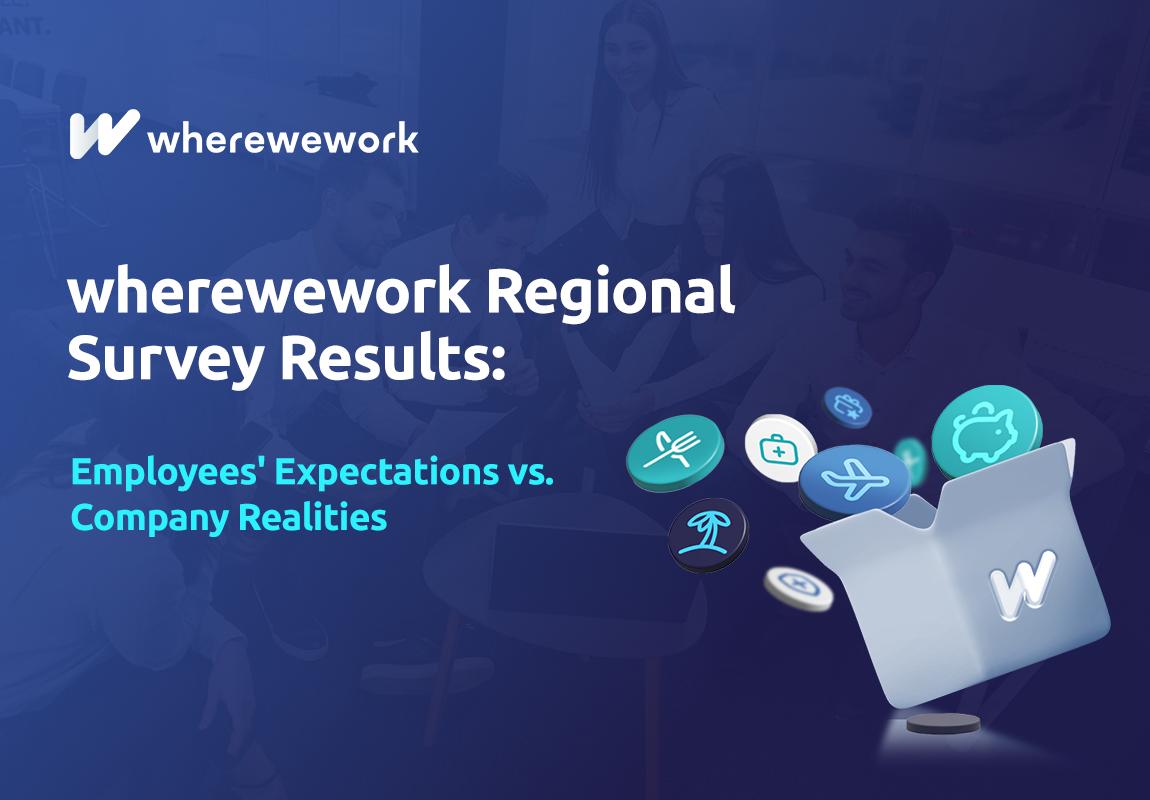Share
wherewework Regional Survey Results: Employee Expectations vs. Company Reality

There is a growing gap between employee and employer expectations
More than two-thirds of Hungarian employees are open to changing jobs, and the vast majority of them are looking for a new opportunity primarily in the hope of a more favorable salary and benefits package, according to wherewework.hu's 2025 labor market research. The survey highlights that there are noticeable differences between employee expectations and employer offers, especially in the areas of income conditions and fringe benefits.
The career portal wherewework.hu (formerly Munkahelyeink.hu) has conducted a regional research including Hungary, Romania, Bulgaria, Greece and Moldova on the latest trends in the labor market. The results of the survey in Hungary provide a comprehensive picture of how employees and employers see the world of work. The data shows that there are certain differences between expectations and offers, especially in the areas of benefits and salary ranges. The aim of the assessment is to shed light on these trends and to provide assistance for labor market dialogue.
Employee perspective – motivations and situation
One of the most significant findings of the research is the degree of openness to changing jobs. According to the survey, 68.6% of employees are open to this option: 40.8% would move if they received a suitable offer, while 27.6% are already actively looking for a new opportunity. This proportion clearly shows that a significant number of employees are constantly monitoring labor market movements and are open to progress. The intention to change is primarily driven by financial considerations: for 65.8% of respondents, a more favorable salary and benefits package would be the primary reason for changing jobs. The second most frequently mentioned factor – a more pleasant work environment – appeared in a significantly smaller proportion (15.1%), while flexible working (10%) and professional development opportunities (7.8%) were additional, but less dominant, considerations.
87.5% of respondents said that a long-term commitment to their current job would be motivated most by an increase in basic salary, but career advancement opportunities (49.3%) and more flexible working (36.8%) also emerged as important factors. However, satisfaction with current salaries is subdued: 59.2% of respondents are dissatisfied or very dissatisfied with their current salary, while only 13.8% have received a raise of more than 10% in the past two years.
The presence of fringe benefits also shows a mixed picture. The most common benefits include performance bonuses and flexible working options (both 38.8%), as well as meal allowances (25%) and private health insurance (23.7%). However, around 8% of respondents do not receive any extra benefits, and many would advocate the introduction of a flexible benefits system that can be managed as an individual framework. More than half of respondents (55.9%) said that they would like to see customizable, user-friendly benefit packages, while 41.5% said that further expansion of flexible working would be the most desirable development. Interestingly, 36.8% of respondents would immediately say yes to a job offering a 20% higher salary, while almost half (49.3%) would make their decision dependent on the benefits package.
Employer perspective – benefits offered and their frequency
Based on employer responses, the most frequently offered benefits include performance-based bonuses (55.1%) and flexible working hours or teleworking (51.9%), which are by far the most common fringe benefits. These are followed by meal allowances (36.7%) and private health insurance (22.8%), although only 10.8% offer extended coverage for family members. Additional benefits such as training, education packages or wellness subscriptions appear with a frequency of 15–30%, while mental health support (7.6%) or extra days off (13.9%) are less common. Some respondents (around 8%) also mentioned unique benefits such as office massages, partner discounts or other service-based benefits.
Regarding future plans, the majority is more cautious: 65.2% do not plan to change the benefit structure, while only 10.1% indicated an increase in the budget, and 13.3% plan to introduce new types of benefits. Interestingly, at the same time, 11.4% are planning to reduce their existing package. Based on the responses, the majority of companies are not currently actively treating the development of the benefit system as a strategic area.
Employers say that the most important factors in attracting new employees and retaining current employees are salary and benefits packages (43.0%) and work-life balance (44.9%). In contrast, opportunities for advancement (7%), organizational culture (3.2%) and the role of management (1.9%) barely featured in the responses. However, plans to review the salary strategy are also modest: half of employers do not plan to make any changes and only 6.3% expect to make any significant changes in the next 12 months.
Mixed practices can also be observed in collecting feedback: although nearly 28% of companies use internal questionnaires and 26% use individual discussions, 39.9% do not collect feedback on wages and benefits at all on a regular basis. This indicates that there is often a lack of structured dialogue on the employer side that would allow for a more accurate understanding of employee expectations and the adaptation of offers accordingly.
Among the responding employers, the most frequently provided benefits include performance-based bonuses (55.1%), flexible working hours or home office options (51.9%) and meal allowances (36.7%). In addition, 22.8% provide private health insurance, while less than 10% offer insurance that extends to family members or mental health services.
Comparison: employee expectations and employer offers
Based on the comparison of the responses, it can be stated that employees and employers think about remuneration and benefit systems along different axes of emphasis. While the salary and the related package are crucial for employees (over 65% of them indicated this as a reason for switching), the majority of employers use more basic or low-value solutions in terms of benefits. Non-monetary, but value-based benefits – such as health benefits or flexible working – appear, but not evenly distributed.
Based on the research, it may be worth focusing in the future on employer strategies that take into account a wide spectrum of employee preferences and offer competitive forms of benefits. Openness to changing jobs and strong income motivations indicate that fine-tuning offers can contribute to building longer-term loyalty and commitment.
“The research underscores a reality that resonates across Central and Eastern Europe: employees are increasingly seeking higher salaries and more personalized, meaningful benefits, while employers remain cautious—navigating these rising expectations amid ongoing economic uncertainty. In Hungary, as in the wider region, people are open to new opportunities, but not at any cost. Today’s workforce is looking for more than financial compensation—they want flexibility, recognition, and workplaces that align with their personal values. Yet many organizations are still relying on traditional or limited benefit models, contributing to a widening expectations gap. Encouragingly, over 20% of employers indicate plans to enhance or diversify their benefits offerings. It’s a promising sign—but bridging this gap will require strategic foresight, empathy, and adaptability. In this evolving labor market, transparency, relevance, and mutual respect have become essential—not just desirable” – said Costin Tudor, CEO of wherewework.
To explore the complete findings, download the full international report: “2025’s Great Expectations Gap: Salaries & Benefits in Romania, Moldova, Greece, Bulgaria & Hungary” The e-book provides detailed data, regional breakdowns, and actionable insights for HR professionals, decision-makers, and all those involved in shaping the labor market of the future.
The study reflects a complex reality in which employees in the region, especially in Hungary, perceive an increasing gap between the effort they put in and the benefits they receive. Although dissatisfaction and high expectations regarding salaries and benefits exist, there is also a shared demand for balance and adaptability. In this context, creating an empathetic, flexible, and feedback-friendly work environment becomes key to retaining and motivating employees in the long term. The future belongs to those who understand that success is measured not only in numbers but also in how well organizations align their policies with the real needs of people.
Share
What I read is worth it:
Read all the articles about
wherewework.hu survey Motivation and vocation Career planning Workforce planning Human behavior Employee experience Employer brandingArticle written by:
Comments
0 comments

Access your account and add your comment
wherewework.hu survey
Subscribe to the Newsletter
Read articles of interest from wherewework.hu contributors


